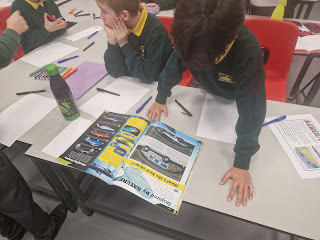Science - How do forces act on a car?
Today we began thinking about how forces can act on a car; to speed it up, and slow it down.
We learnt about friction, identifying the several ways friction can act on a car, both on the tyres, the axel, and in the air. With a focus on ground friction today, the children looked at F1 racing, speaking with an engineer, and we found out that they actually warm the tyres up to between 80-100 degrees Celsius before putting them on the car, as warmer tyres grip the ground better.
We also had a go at interleaving book pages, testing the strength of friction.
We then zoomed in to a range of surfaces, learning that the reason that we experience friction, no matter how smooth the surface, is because every surface is made up of millions of tiny bumps and ridges, which rub over each other, creating friction.
We learnt that we can reduce friction on the ground in three ways:
- reducing the mass of our car
- increasing the the thrust
- using a lubricant
We are excited to explore mass and lubricant further in our future lessons, to ensure our cars are super speedy! We realised we can't increase the thrust, so this is one variable we will have to keep the same!
Next week we are excited to focus on friction in the air, looking at streamlining.





Comments
Post a Comment